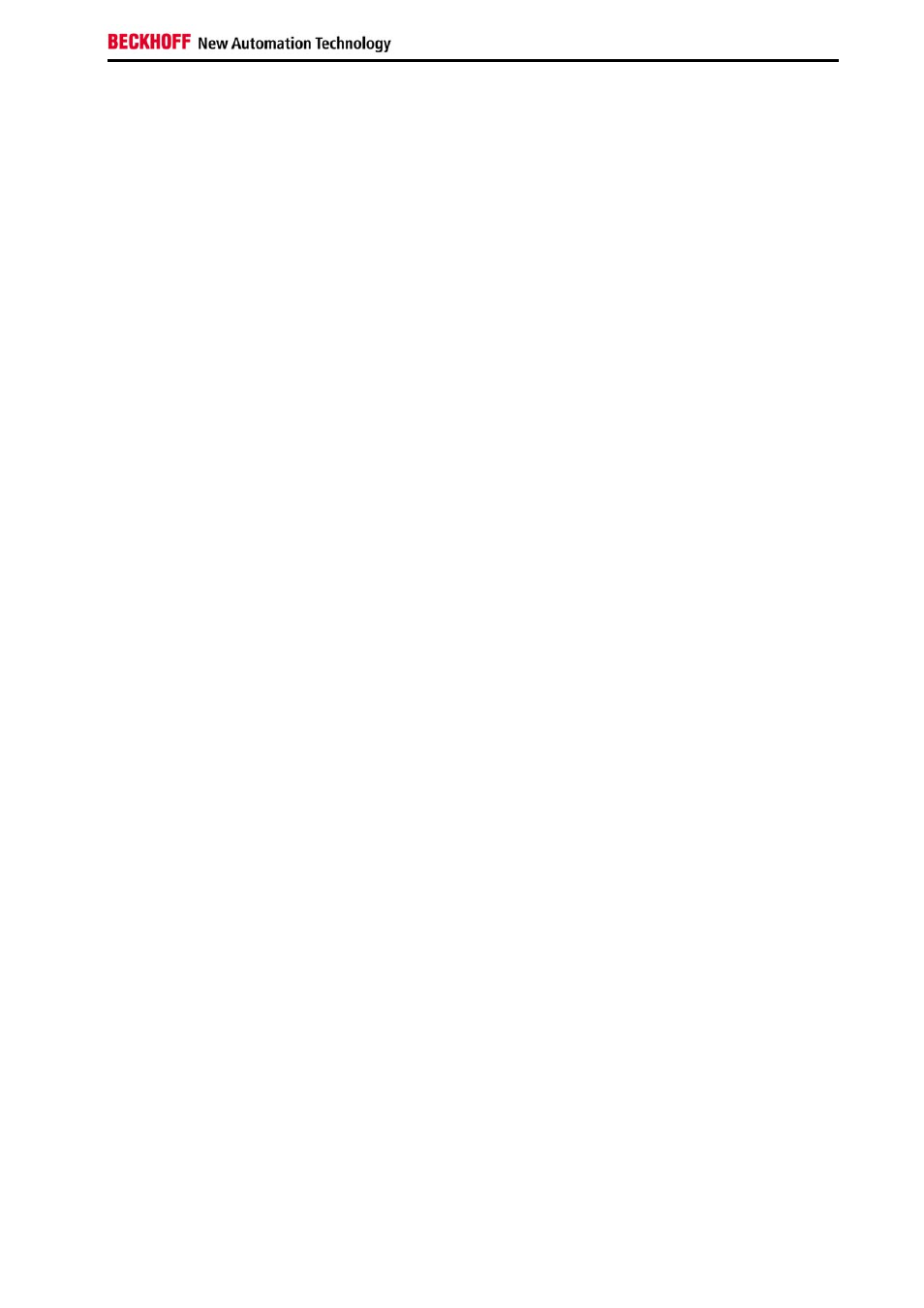Technical data, Approvals for usa and canada, Fcc: canadian notice – BECKHOFF CU8810-0000 User Manual
Page 19: Technical, Data

Appendix
CU8810-0000
17
Technical data
Number of ports
USB Type B ports (downstream): 1
USB Extender Rx ports (RJ45):
4
DVI Input Ports:
2
DVI Output Ports:
4
Supported standard
USB 1.1
Supported baud rates
12 Mbit (Full Speed), 1.5 Mbit (Low Speed)
Status display
12 LEDs
USB extension wiring
length
Maximum 50 meters
USB wiring length
Maximum 1 meters
Power supply
24 V
DC
(-15% to +20%), protected against polarity reversal.
To meet the UL requirements use 4 A fuse or class 2 power supply!
Power consumption
Maximum 2.7 W
Max. current input from 5 V
USB
Maximum 0 mA @ 5V
DC
Current output over USB/E Maximum 500 mA @ 15V
DC
The following conditions must be observed during operation:
Environmental conditions
Ambient temperature:
0 to 55°C (operation)
-25°C to +70°C (transport/ storage)
Atmospheric humidity:
Maximum 95%, non-condensing
Vibration/ Shock resistance EN 60068-2-6 / EN 60068-2-27
EMC resistance burst/ ESD EN 60000-6-2 / EN 60000-6-4
Protection class
IP20
Do not use the CU8810 in
areas of explosive hazard
The DVI splitter may not be used in areas of explosive hazard.
Dimensions (W x H x D)
Approx. 146mm x 100mm x 42mm (with mounting for DIN rail)
Weight
Approx. 580 g
Assembly
On 35 mm mounting rail conforms to EN 50022
Installation position
Any
Approvals
CE
Approvals for USA and Canada
FCC: Federal Communications Commission
Radio Frequency Interference Statement
FCC Approval for USA
This equipment has been tested and found to comply with the limits for a Class A
digital device, pursuant to Part 15 of the FCC Rules. These limits are designed to
provide reasonable protection against harmful interference when the equipment is
operated in a commercial environment. This equipment generates, uses, and can
radiate radio frequency energy and, if not installed and used in accordance with the
instruction manual, may cause harmful interference to radio communications.
Operation of this equipment in a residential area is likely to cause harmful
interference in which case the user will be required to correct the interference at his
own expense.
FCC: Canadian Notice
FCC Approval for Canada
This equipment does not exceed the Class A limits for radiated emissions as
described in the Radio Interference Regulations of the Canadian Department of
Communications.
